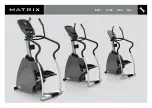
KDFX Reference
KDFX Algorithm Specifications
10-145
792 Gate+TubeAmp
Combination algorithm designed for guitar processing.
PAUs:
3
This algorithm is provided with guitar processing in mind. It sends the signal through a gate, tone
controls, tube distortion and cabinet simulation or EQ section. Also depending on the algorithm selected,
the signal may pass through one or more of compressor, equalization, chorus,
fl
ange, moving delay or
reverb. The algorithm is mono, though the chorus or
fl
ange can provide stereo spreading at the output.
Figure 63
Gate+TubeAmp
The gate (same gate as
Gate
) allows you to cut out noise during silence. Both the gate and compressor
have their own side-chain processing paths, and a number of signal routing options for side-chain
processing are provided. The gate side-chain input may be taken from either the left or right channels, or
the average signal magnitude of the left and right channels may be selected with the GateSCInp
parameter. Also you may choose to gate the sum of left and right channels or just one of the channels with
the Gate Chan parameter. Since the effect is mono, if you gate only one channel (left or right), then that
channel will be sent to the next stage of the effect, and the channel that is not selected will be discarded. If
you choose both (L+R)/2, the sum (mix) of both channels will be used for further processing.
Figure 64
Gate routings
Each of the guitar combi algorithms contains a tone control and tube distortion model. The 3-band tone
control authentically recreates the response in many guitar preamps based on real measurements collected
by Kurzweil engineers. It is adjusted with the Bass Tone, Mid Tone, and Treb Tone controls with values
ranging from
0
to
10
commonly found on many guitar amps. The
fl
attest frequency response is obtained
by setting Mid Tone to
10
, and both Bass and Treb Tone controls to
0
. The Tube Drive parameter faithfully
model the response and smooth distortion caused by overloading a vacuum tube circuit.
Following the tube distortion is cabinet simulation or an EQ section with parametric bass, treble and mid-
range equalization
fi
lters. The cabinet simulator models the responses of various types of mic’d guitar
cabinets. The preset can be selected using the Cab Preset parameter. The presets are described below.
L Input
R Input
Gate
Tone
Tube
Amp
Cabinet
L Outp ut
R Outp ut
L Input
R Input
Select
L, R, or Sum
Select
L, R, or Sum
Side Chain
Processing
Gate
Содержание K2661
Страница 18: ...2 4 LFOs LFO Shapes...
Страница 34: ...3 16 DSP Algorithms...
Страница 54: ...5 4 MIDI Note Numbers Note Numbers for Percussion Keymaps...
Страница 72: ...7 10 System Exclusive Protocol K2661 System Exclusive Implementation...
Страница 82: ...9 4 Upgrading Sample Memory Choosing and Installing a SIMM for K2661 Sample Memory...
Страница 334: ...10 252 KDFX Reference KDFX Algorithm Specifications...
Страница 340: ...11 6 Glossary...
Страница 382: ...12 42 Triple Modular Processing Alphanumeric Buttonpad Entries for DSP Functions...
Страница 392: ...B 6 SysEx Control of KDFX MSB and LSB...
Страница 442: ...D 20 Contemporary ROM Block Objects Controller Assignments Contemporary ROM Block...
Страница 490: ...H 12 General MIDI Standard Mode Controller Assignments...
Страница 492: ...I 2 Live Mode Objects Live Mode Programs...
Страница 498: ...K2661 Musician s Reference Index...
Страница 500: ......
















































